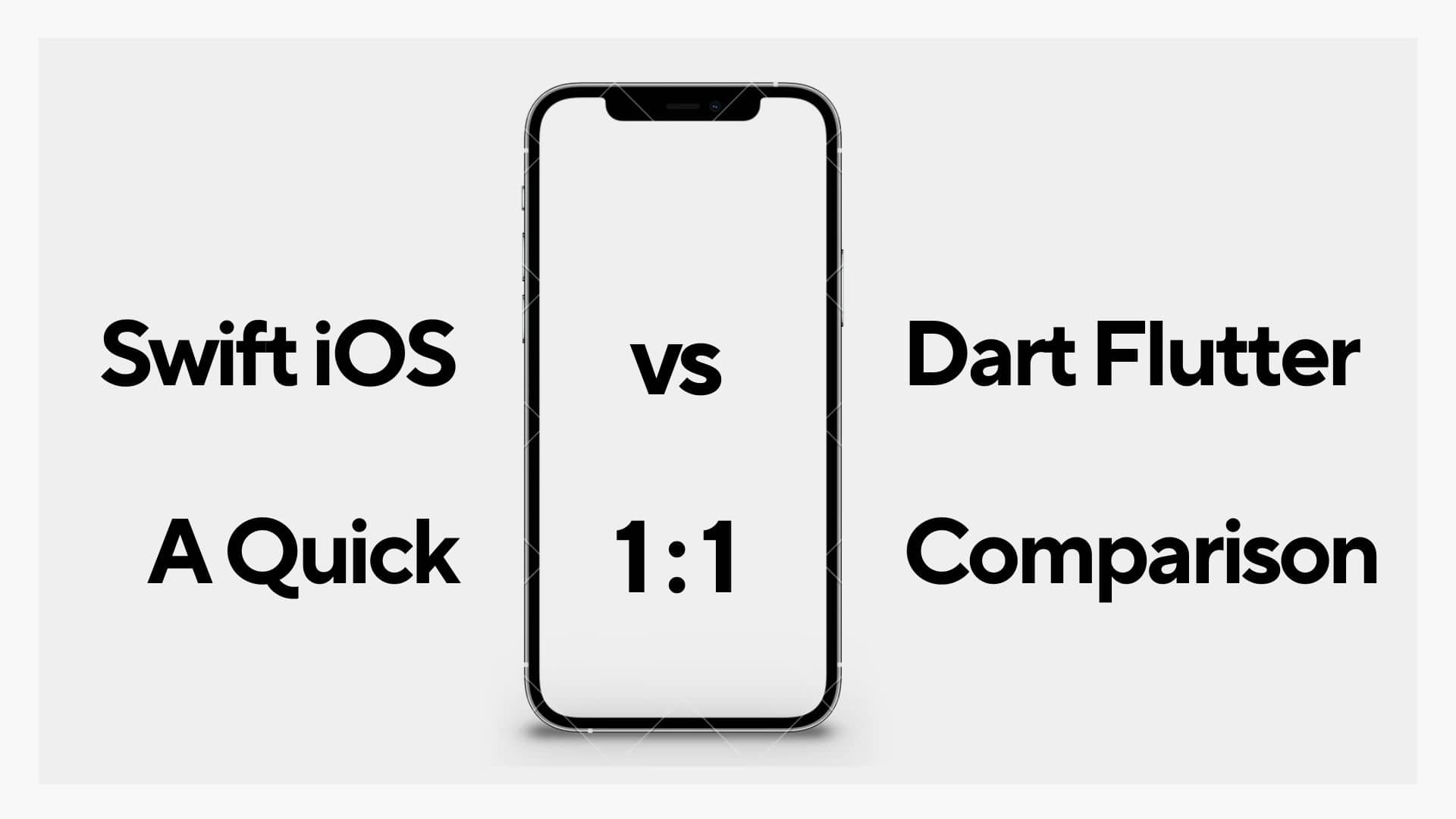Swift iOS vs Dart Flutter: A Quick Comparison

In the realm of mobile app development, choosing the right technology stack is crucial for the success of a project. Swift and Dart with Flutter are two popular options for iOS and cross-platform development, respectively.
In this article, we'll provide a quick comparison between Swift for iOS and Dart with Flutter, covering key aspects such as language syntax, UI development, performance, and community support.
Language Syntax
Swift (iOS):
Swift is a powerful and expressive programming language developed by Apple for iOS, macOS, watchOS, and tvOS app development. It is known for its concise and readable syntax, making it easier for developers to write clean and maintainable code. Here's a simple Swift code snippet for a "Hello, World!" app:
import UIKit
class ViewController: UIViewController {
override func viewDidLoad() {
super.viewDidLoad()
let greeting = "Hello, World!"
print(greeting)
}
}Dart with Flutter:
Dart is the programming language used with the Flutter framework for cross-platform app development. Dart has a C-style syntax and is designed for simplicity and productivity.
Here's an equivalent "Hello, World!" code snippet in Dart:
void main() {
String greeting = "Hello, World!";
print(greeting);
}UI Development
Swift (iOS):
Swift uses UIKit for building user interfaces on iOS. It provides a wide range of UI components and a powerful interface builder in Xcode, allowing developers to create visually appealing and responsive user interfaces.
Dart with Flutter:
Flutter, on the other hand, follows a reactive UI development approach. It uses a single codebase to create UIs for both iOS and Android. Flutter has its own set of customizable widgets, and the UI is defined using a declarative language.
Here's a simple Flutter widget:
import 'package:flutter/material.dart';
void main() {
runApp(
MaterialApp(
home: Scaffold(
body: Center(
child: Text('Hello, World!'),
),
),
),
);
}Performance
Swift (iOS):
Swift is a compiled language that directly interacts with the performance-optimized Cocoa and Cocoa Touch frameworks. This close integration results in high-performance iOS apps.
Dart with Flutter:
Flutter compiles to native ARM code, providing high performance. The framework also uses a graphics engine called Skia, ensuring smooth animations and a consistent performance across different platforms.
Community Support
Swift (iOS):
Swift benefits from strong community support and is the official language for iOS development. It has a well-established ecosystem with numerous libraries and frameworks available through Swift Package Manager.
Dart with Flutter:
Flutter has gained popularity and has a growing community. While it might not be as mature as Swift's community, Flutter's active community contributes to its ecosystem, providing packages and plugins through the Flutter package manager.
Conclusion
The choice between Swift for iOS and Dart with Flutter depends on project requirements, development speed, and the need for cross-platform compatibility. Swift is the go-to language for native iOS development, while Dart with Flutter offers an excellent solution for building cross-platform apps with a single codebase. Both technologies have their strengths, and the decision should be based on the specific needs and goals of your app development project.